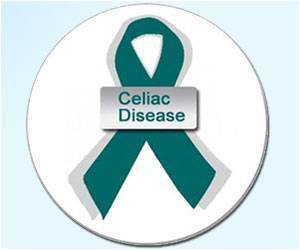, a collective term for proteins present in wheat, rye, barley, and triticale (a hybrid of wheat and rye), plays a crucial role in maintaining the structural integrity of food, acting as a binding agent (
).
The impact of celiac disease on the body is substantial. When individuals with this condition consume gluten, their immune system launches an attack on the small intestine, classifying the disease as an autoimmune disorder. These immune responses result in harm to the villitiny, fingerlike projections lining the small intestinethat play a vital role in facilitating nutrient absorption. Consequently, damaged villi hinder the proper absorption of nutrients into the body.
Advertisement
Those with celiac disease face a twofold increased risk of developing coronary artery disease and a fourfold heightened risk of small bowel cancers.
At present, the sole recourse for managing celiac disease is a lifelong commitment to a strict gluten-free diet. While some people not diagnosed with celiac disease are forgoing cereal grains in pursuit of perceived benefits such as weight loss and improved digestion, it is crucial to recognize the nutritional significance of these grains (2✔ ✔Trusted Source
Celiac disease
Go to source).
Linking Auto-antibodies to Tooth Enamel Developmental Disorders
The study, detailed in the journal Nature, establishes a noteworthy link between tooth enamel developmental disorders witnessed in specific autoimmune diseases, such as celiac disease, and the presence of auto-antibodies targeting proteins crucial for the formation of healthy tooth enamel.
Contrary to previous beliefs associating dental manifestations in celiac disease with gut inflammation-induced malabsorption, this research reveals a more intricate relationship. The study posits that defects in enamel formation may be a consequence of autoimmune reactions triggered by antibodies produced against proteins present in the gut or diet. These antibodies bind to proteins responsible for controlling tooth enamel development, uncovering a previously unrecognized aspect of the intricate interplay between autoimmune responses and dental health (3✔ ✔Trusted Source
Dental Manifestations and Celiac Disease-An Overview
Go to source).
The intricate dance of proteins unfolds as tooth enamel proteins reveal binding sites akin to those found in proteins such as transglutaminase 2 (TGM2), a vital player in celiac disease onset, and kappa-casein in cow’s milk. TGM2, pivotal in triggering celiac disease by modifying gliadin, a gluten component, becomes a focal point where the immune system reacts, generating autoantibodies against both TGM2 and gliadin. These antibodies, specific to celiac disease, also serve as diagnostic markers.
Implications for Dental Health and Disease Screening
While celiac disease primarily manifests as intestinal inflammation, the study emphasizes that in affected children, proper tooth enamel development is frequently compromised. Often, it is the astute observation of a child’s dentist that raises suspicion of celiac disease. This new understanding not only highlights the importance of dental health in autoimmune diseases but also underscores the role of dentists in early disease detection.
The findings pave the way for heightened awareness among healthcare professionals, offering new avenues for early detection and comprehensive management of autoimmune diseases with dental implications (4✔ ✔Trusted Source
Dental Enamel Defects & Celiac Disease
Go to source).
These studies not only broadens our understanding of autoimmune disorders but also underscores the need for a multidisciplinary approach to healthcare.
References :
- Celiac disease in India: are they true cases of celiac disease? – (https://pubmed.ncbi.nlm.nih.gov/12394375/)
- Celiac disease – (https://www.mayoclinic.org/diseases-conditions/celiac-disease/symptoms-causes/syc-20352220)
- Dental Manifestations and Celiac Disease-An Overview – (https://www.ncbi.nlm.nih.gov/pmc/articles/PMC10144097/)
- Dental Enamel Defects & Celiac Disease – (https://www.niddk.nih.gov/health-information/professionals/clinical-tools-patient-management/digestive-diseases/dental-enamel-defects-celiac-disease)
Source: Medindia



